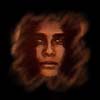
|
| |
|
|
|
|
Francisco Goldman, an American of partial Guatemalan descent, is the author of two novels, The Long Night of White Chickens and The Ordinary Seaman, both published by Grove/Atlantic Press. In the 1980s he wrote several articles on Central America for Harper's Magazine.
Do places like the unnamed Latin American country seen in "Men With Guns" really exist in our hemisphere, with whole villages massacred and burned off the face of the earth and young girls tortured and raped? A place where young people might be killed merely for providing medical care?
|  |
|
Of course it's believable. It happened, during a just-ended civil war of thirty-five years in Guatemala: 440 Mayan villages vanished off the face of the earth during one scorched earth counter-insurgency campaign; 150,000 dead, countless widows and orphans. In the silenced, haunted countryside, people were too frightened to name their persecutors, they simply called them la mala gente, the bad people, the same as the men with guns of this movie. And it happened to my aunt's brother; for years the doctor had tried to establish a rural health technician program in Guatemala, and even had to go into exile with his family for awhile, accused of being a communist simply for that effort. The army did not want health technicians in the countryside for the same reason that they did not want teachers, priests or nuns there either: they knew that any educated person would side with the poor in the face of such extreme persecution and poverty, and might even take up the work of consciousness-raising and political organizing, bringing people over to the guerrillas. (In such a deadly climate, someone who did not in fact side with the guerrillas might eventually find himself targeted by them instead.) But eventually my aunt's brother succeeded in raising money from such groups as the World Health Organization, and set up a small school to begin training the so-called "barefoot doctors." Unlike the doctor in John Sayles' movie, he was never innocent about the violence in the countryside. But he exemplified the dilemma of the conscious liberal, the man of reason, caught in a situation polarized and dominated by the forces of political extremes, and of extreme violence. He simply did not believe that the army would go that far, that not even they were capable of such incredible inhumanity and cruelty as to murder young health care providers. But the army did murder a number of them, and frightened many more into fleeing, and my aunt's brother suffered a massive stroke which left one side of his body paralyzed.
|  |
|
The country depicted in John Sayles' movie has a lot in common with the Guatemala of the last few decades, of course, but it resembles, and metaphorically recalls, many other places as well: Chipas, Mexico; the Peruvian Andes; the Argentina of the Dirty War; Colombia; Cuba; South Africa — anywhere on earth where people have been murdered by political forces while terror, censorship and repression keep many of the living locked into silence, into a self-protective stance of not-knowing or denial. Even citizens of the United States can be complicit in this silence, in this blithe attitude of "I'd rather not know" when confronted with the role of their own country in backing and supporting some of these murderous regimes.
| |
|
Without malice or vengeance or stridency, "Men With Guns" asks us to weigh the price between not knowing and knowing, between silence and acknowledging, between lies and truth, between "innocence" and self-knowledge. During the mythological journey narrated in this film, all the central characters finally confront those choices, and we do so with them. Just as the doctor, the priest and the soldier in the movie realize how the personal--that which affects only them-- also affects their country, we, watching the movie, make a similar journey. In that private, inner-space of our own where art is experienced, where anything is possible, where the imagination reminds us that we are alone and never alone in our common humanity, we feel what is at stake in this movie.
|  |
|
I suppose we choose every day, in countless ways, between denial and self-knowledge: societies as a whole face such choices too. Guatemala today, a deeply wounded country, remains divided between those who want to know and those who don't: between those who simply want to forget the just ended war and get on with life, and those who want a Truth Commission to delve fully into the crimes of the past decades. I think a movie like John Sayles' "Men With Guns" tells us why it is always better to know, by showing us that not knowing makes us less fully human. As Rosalina Tuyuc, Guatemala's sole Mayan congresswoman, recently said at an international forum on censorship "A people without information are a dead people." We need stories like "Men With Guns" to give life to information and "facts." The imagination safeguards the future by bringing memory and the past to life, warning us that the consequences of choosing silence and not-knowing are universally fatal.
| |
|
As for my aunt's brother, here is a "real-life" reflection of the hint of redemption and hope at the end of "Men With Guns": the school the doctor founded is thriving, and in the past decade or so has trained three thousand health technicians. One of these, having gained the respect of the people living in his area, was recently elected to Congress. Thus the possibility for peace remains, even in a country as troubled as Guatemala. |  |